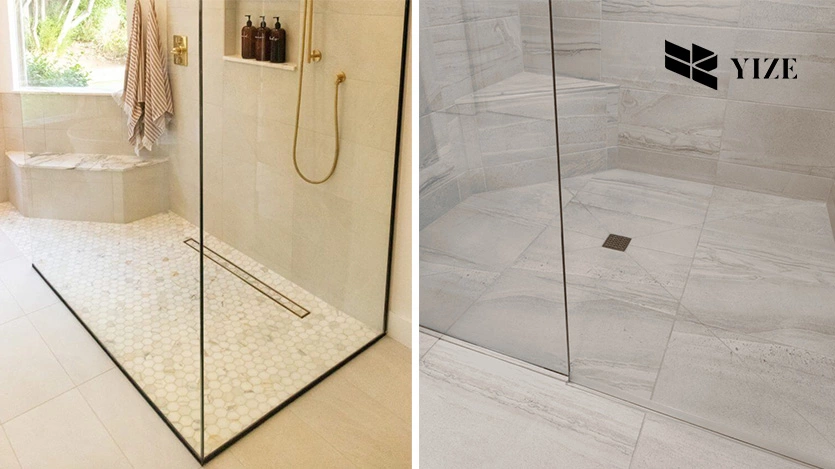
I. Introduction
In particular, it should be noted that bathroom design is entirely dependent on tile showers when choosing a shower drain. The right drain determines the appearance of your shower and offers a proper flow of water. There are two kinds of drains available: linear drains and traditional drains. Which is the best one for the bathroom?
As for their applicability, look, installation approach, drainage efficiency, and maintenance needs, this composition will compare linear drains and traditional drains.
II. Understanding Linear Drains and Traditional Drains
1. What is a Linear Shower Drain?
Installed on one of shower floor edges such as the rear wall or the entry, a linear shower drain is a narrow drain. Linear drains are different from circular or rectangular drains placed at the center and with only one slope, the linear drain is meant to channel water from a larger area.
(1)Design Aspects and Aesthetics:
Often, linear drains are seen as a modern drains. Most notably when incorporated with large format tiles they blend reasonably well with the floor. Its lines are very sleek and minimalist designed that one barely notices it and this gives the shower design centre stage.
(2)Benefits of Linear Drains:
- Elegant and contemporary style: Ideally for modern bathrooms.
- Effective drainage: A linear design enables one to handle more water quantity as compared to a more compact design.With the help of it one can make smooth looking layouts and Stick Big tiles.manage more water volumes.
- Design adaptability: It lets one create seamless layouts and bigger tiles.
2. What is a Traditional Shower Drain?
Commonly again a round or a square shape it is normally installed at the center of the show floor. Commonly found in older bathrooms and more classic designs, this kind of drain has been the norm for many years.
Historical Context and Common Use:
Residential and business buildings have long made use of conventional drains. Usually situated at the middle, the shower floor sloping in all directions toward the drain. This configuration ensures proper water distribution towards the centre and thus prevents formation of pools.
3. Benefits and Limitations of Traditional Drains:
- Easy installation: Surprisingly, it is easier to install because of its uncomplicated structure as compared to other types of roofing materials.
- Readily available: Frequently less costly and typical are conventional drains.
- Limitations: Their location may disrupt the diagonal of large tile layouts and may not be suitable for open contemporary showering solutions.
III. Linear Drains vs. Traditional Drains – Key Differences

1. Aesthetic Appeal
When deciding between linear drains and traditional drains, one mostly considers their visual impact.
(1)Linear Drains:
- Particularly on the rear wall or entry of the shower, give a neat, understated appearance with your linear drains.
- Let bigger tiles with less cuts to help to create a consistent, elegant look.
- Ideal for open-concept, contemporary bathrooms.
(2)Traditional Drains:
- Particularly with bigger tiles, the central location might upset tile arrangements.
- Often more obvious, a minimalist look is more difficult to accomplish.
- Designed ideally for more conventional or smaller showers.
2. Installation Process
Regarding installation, linear drains have different difficulty than conventional drains.
(1)Liner Drain:
- Installation: Installation of a linear drain calls for careful design to guarantee the floor slopes toward the drain. The drain is placed on one side of the shower, therefore simplifying the floor design generally and allowing greater flexibility.
- Layout: Large-format tiles made possible by linear drains help to eliminate the need for tile cuts, therefore producing a more seamless finish.
(2)Traditional Drains:
- Installation: Usually easier, traditional drains demand the floor to slink in several ways toward the center.
- Tile layout: Especially with large-format tiles, the center drain can call for more exact tile cutting. This can cause more tile arrangement disturbance and seam creation.
3. Water Drainage Efficiency
The construction of both linear drains and traditional drains also allows comparison of their effectiveness regarding water drainage.
(1)Linear Drains:
- Effective Water Movement: The absence of any vertical facets and the fact that all portions of the shower towards the drain feature a single slope are achievable through the linear design, freeing the water to flow naturally and preventing pooling.
- Faster Drainage: For walk-in showers or high-flow settings, linear drains are perfect since their design helps them to manage water from bigger shower spaces.
(2)Traditional Drains:
- Multiple Slopes: If improperly built, the floor must slope toward the shower’s center, often causing water collecting along the sides.
- Less Efficient: While it’s one of the best designs out there, the conventional center drain layout might struggle with more intricate or large shower configurations.
4. Cleaning and Maintenance
Like all types of drains, both linear drains and traditional drains require maintenance, but linear ones are easier to maintain than their counterpart.
(1)Linear Shower Drains
- Easier to Clean: Linear Drains Linear drain are easy to clean since they do not have cover like other types of drains. They are commonly designed having covers which are disengageable to allow for easy maintenance.
- Reduced Clogging: Smaller Larger apertures and less effective water flow causes more chances of trash accumulation.
(2)Traditional Drains
- Harder to Clean: There are also challenges of cleaning around the edges, mainly because the drain is placed in the middle. Additionally, the apertures that allow the drain are much smaller lets in more trash which would definitely lead to obstruction.
5. Needs
More Attention: Failure to clean regularly is a way of having large amounts of soap and hair that hinder the normal flow of water.
IV. Why Choose Linear Drains for Tile Showers?

1. Flexibility in Design
Some of the main advantages of linear drains are associated with design flexibility.
- Placement Flexibility: Linear drains should be placed at locations which will be most appropriate for the shower layout of your design; they can be set along the wall or at the doors of the shower space.
- Large Tile Compatibility: Applying the most used trend in the modern bathroom, large-format tiles are laid easily due to the linear design.
- Barrier-Free Designs: Linear drains help to eliminate the transition between the shower and the rest of the bathroom in support of a no threshold or low threshold shower.
2. Enhanced Accessibility
That is why to make accessible showers conforming to the ADA requirements, they need a linear drain.
- Wheelchair Accessibility: This would be perfect for wheelchair users since they can be placed along the wall and help to offer a barrier free access and egress.
- Ease of Access: Linear drains are found to be ideal for the elderly or disabled persons because they present a comfortable entry way into the shower with no barrier.
V. Why Choose YZDRAIN’s Linear Drains?
1. Superior Product Quality
Regarding selecting linear drains, one must take product quality into great account. Excellent materials and workmanship of YZDRAIN guarantees that every drain is strong, long-lasting, and efficient.
YZDRAIN’s linear drains are designed to last for years, thereby offering great performance.
- Durability: It also focuses on their linear drains and they come with specific design to ensure perfect installation and optimally successful water drainage.
- Precision Manufacturing: These features give product-line a unique look that OUTPERMS its competitors in every way possible by making it unique Through these creative elements, YZDRAIN maintains a competitive edge over the market.
2. Ideas of Innovation and Technology.
- Customizable Options: From the size to the material finishes, YZDRAIN offers several options to suit the most specific needs of your bathroom.
- Their drains are produced using modern technology to enhance its drainage system so as to reduce cases of blockage and enhance water flow.
3. Positive Customer Feedback
It is appreciated when people with knowledge on home building and designing provide good comments about YZDRAIN such as homeowners, builders, and bathroom designers.
- Satisfied Customers: Most users have appreciated the YZDRAIN for simplicity in design, functionality and usability, and ease in maintaining the linear drains.
- Successful Installations: Case studies reveal how YZDRAIN’s products have revolutionised bathrooms by offering both design and utility.
VI. Conclusion
Particularly in modern bathrooms, linear drains have various benefits over conventional drains. Many homes find their elegant design, effective drainage, simplicity of installation, and adaptability to be the greatest fit. Linear drains present a solution that meets your needs if your design is straightforward, if you need more accessibility, or if you need better water drainage.
If you’re in the process of considering how to modernise your shower , turn to YZDRAIN for linear drains, and select the best one for your home.
Frequently Asked Questions (FAQs)
1. Are linear drains easier to install than traditional drains?
However, as compared with conventional drains, since linear drains require only one slope toward the drain, their installation can be relatively simpler.
2. Can linear drains be used with large tiles?
Indeed, for large-format tiles, linear drains are perfect because they do not allow for even one tile to be cut around the drain.
3. Are linear drains more expensive than traditional drains?
Despite the fact that they are relatively more expensive than conventional drains, linear drains are more worthwhile because of the design flexibility, drainage pattern and aesthetics.
4. Do linear drains clog more easily than traditional drains?
Linear drains have large holes and efficient water flow thus are not easily susceptible to clogging. However, the distinction of debris still remains unclear on aspect of maintenance.
